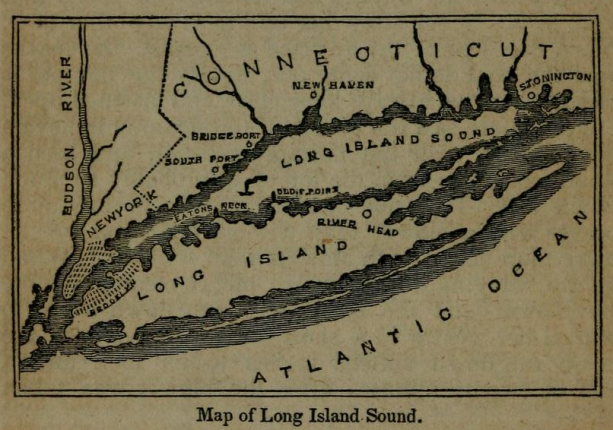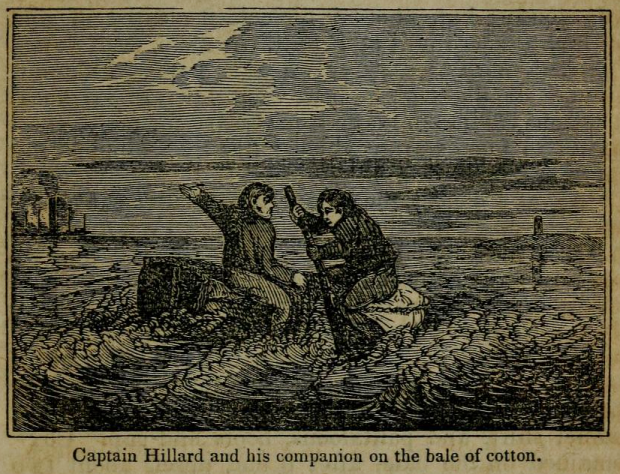On January 13, 1840, over 150 people perished on Long Island Sound when the steamboat Lexington caught fire. Only four survived the “Appalling Calamity,” as newspapers across the country described it. The 207-foot-long boat, en route from New York to Stonington, was laden with passengers and freight–including 150 bales of cotton on the upper deck. The fire broke out near the smoke pipe around 7:00 p.m. and, fanned by the strong wind, quickly spread to the cotton. All attempts to extinguish the flames failed.

“Conflagration of the Steamboat Lexington, January 13, 1840″ from Steamboat Disasters and Railroad Accidents in the United States by S. A. Howland, 1846.
Only two miles off Eaton’s Neck, Captain George Child turned the boat toward the Long Island shore. The captain lost control of the Lexington under full steam, however, when the tiller ropes burned, then broke. The smoke and location of the fire amidships made communication nearly impossible, and as the fire spread so did the panic among the passengers. Unfortunately, the distraught passengers tried to hoist the three small lifeboats on board over the side while the Lexington moved at top speed. The small boats immediately swamped and sank, along with those on board. Hit by the steam wheel, a larger lifeboat was also lost. The Lexington‘s engines soon cut out and the boat was adrift, moving farther from the shore. In desperation, those still on board threw anything that floated overboard (including the surviving bales of cotton, passenger’s luggage, trunks, and freight boxes) into the frigid water.
Though the burning boat could be seen from the shores of both Connecticut and Long Island, rescue attempts proved unsuccessful. Low tide and ice prevented the sloops and schooners from leaving nearby harbors. The Lexington burned for eight hours before it finally sank. Four people survived, including three of the crew: “Captain Stephen Manchester, the pilot of the boat; David Crowley, the second mate, and Charles Smith, a fireman.” Only one passenger lived, a man with some experience on the sea, Captain Chester Hillard of Norwich, Connecticut. The men survived in the icy water by clinging to the 4′ x 3′ cotton bales and other debris from the wreck. They were in the water for well over 15 hours.

An illustration, “Map of Long Island Sound,” depicting the location of the steamboat Lexington from Steamboat Disasters and Railroad Accidents in the United States by S. A. Howland, 1846.
Kim Sheridan is a researcher and digital curator who holds a Master’s Degree in Library Science from Southern Connecticut State University.









